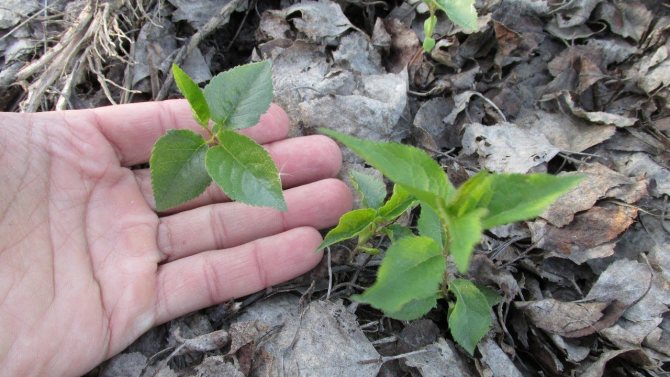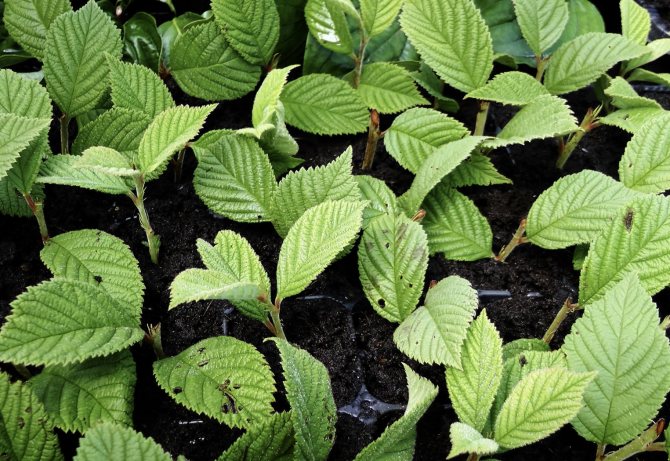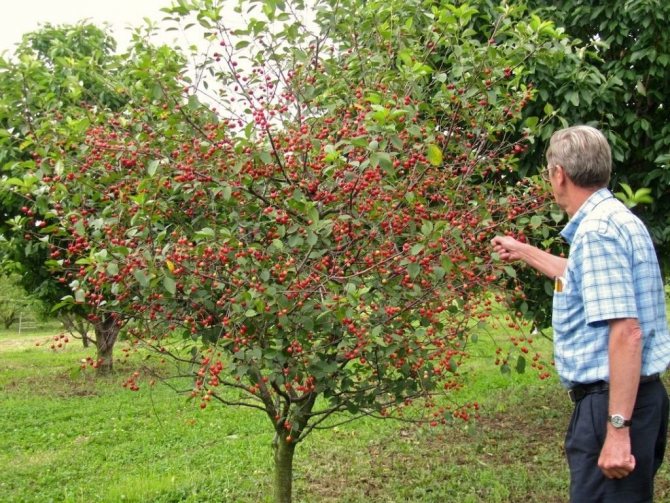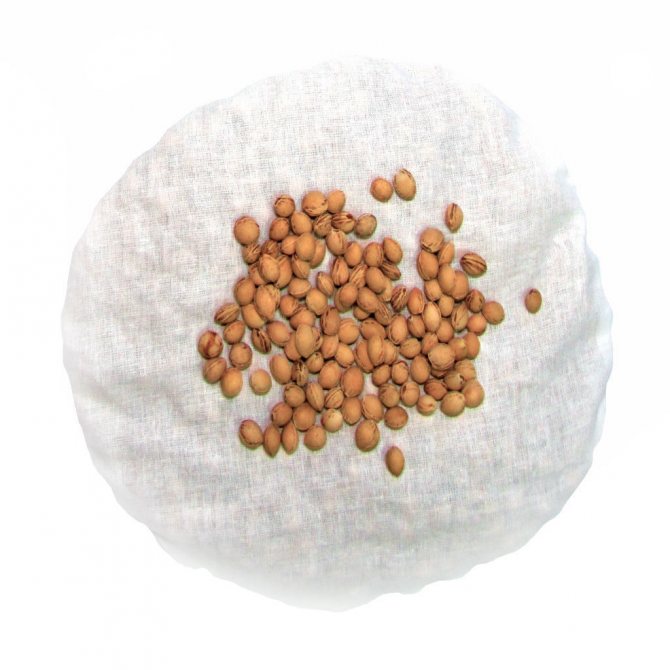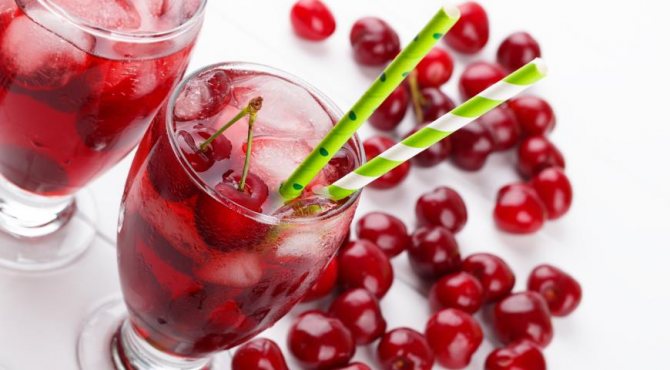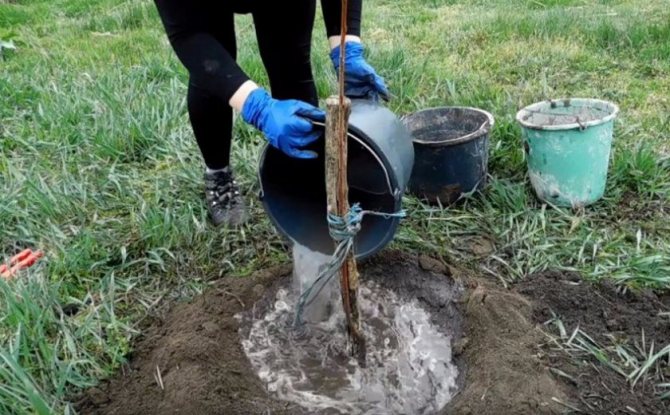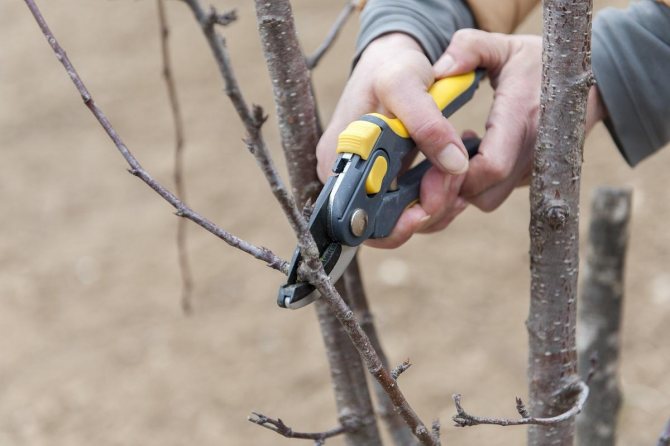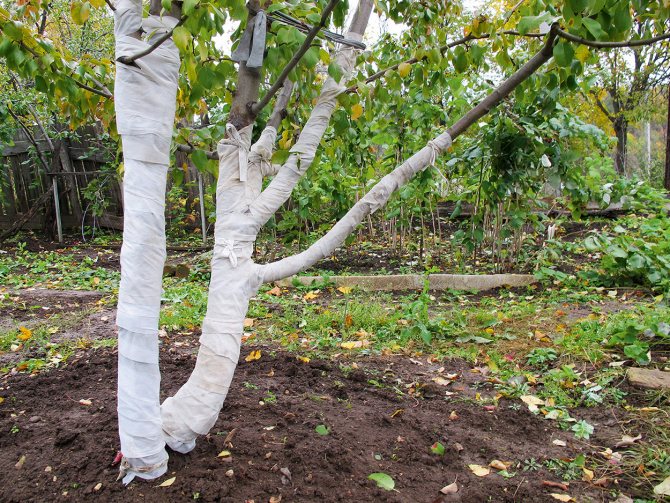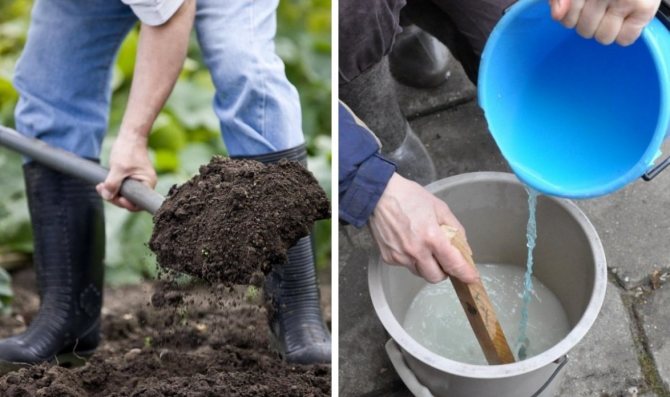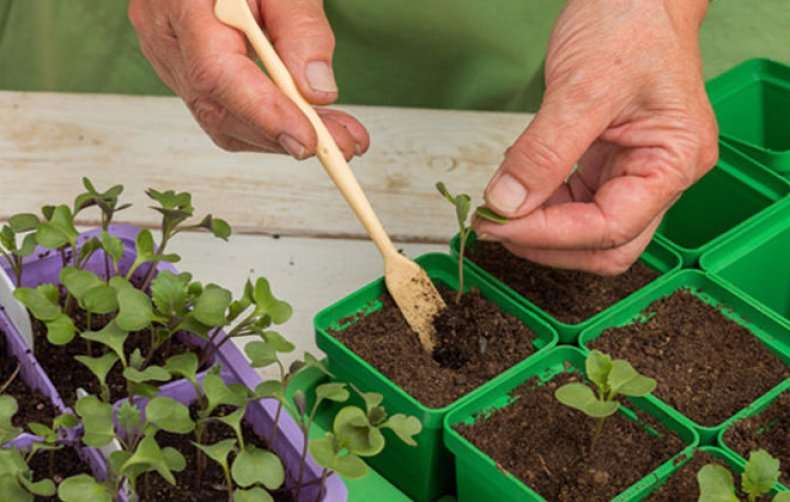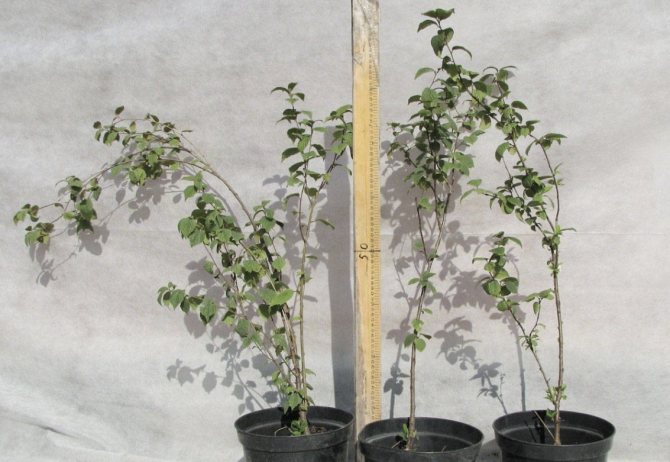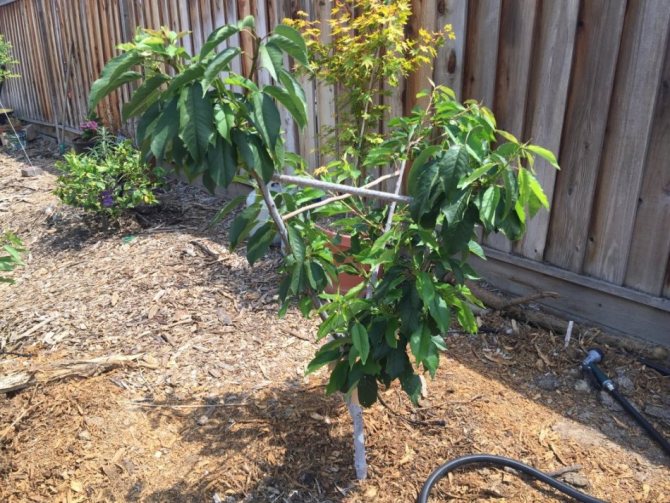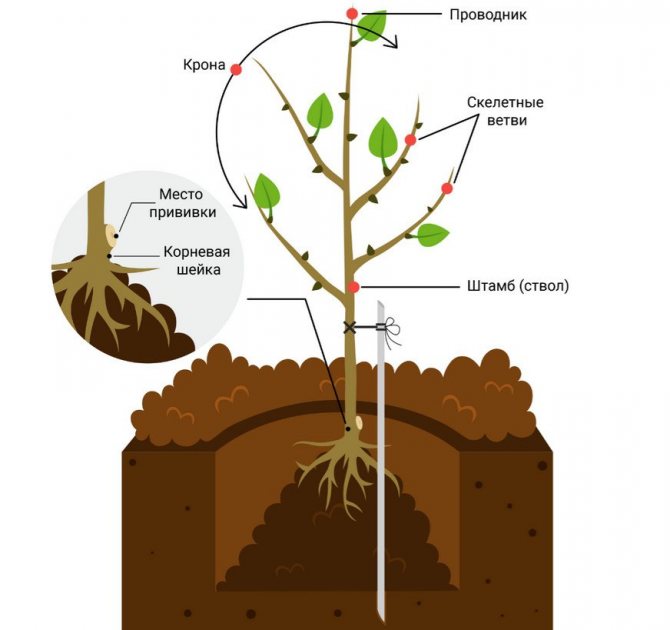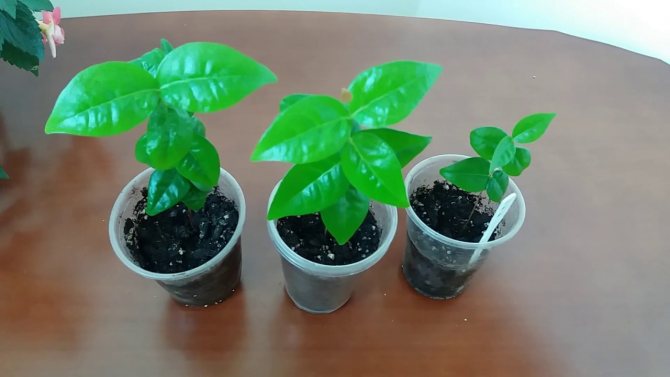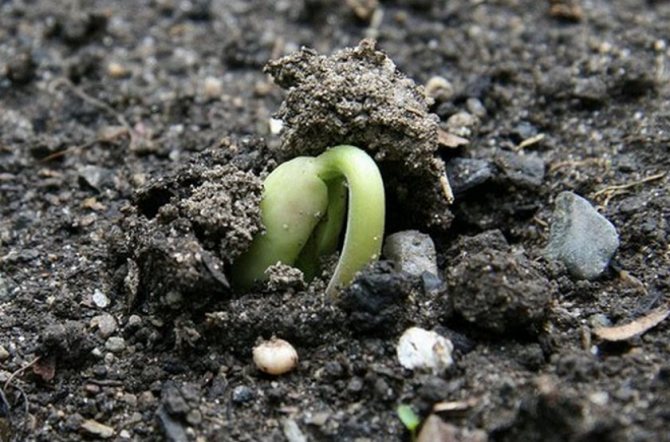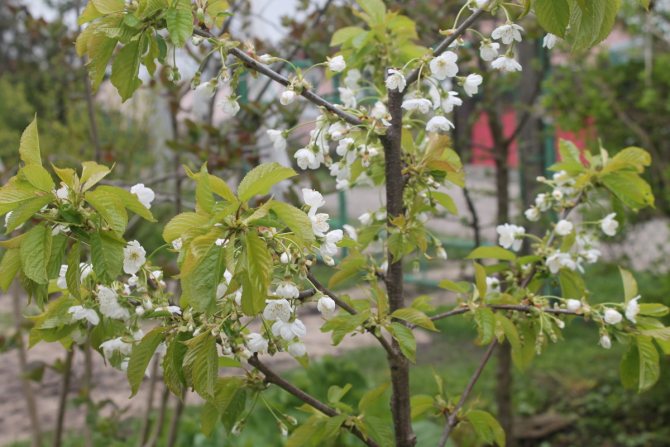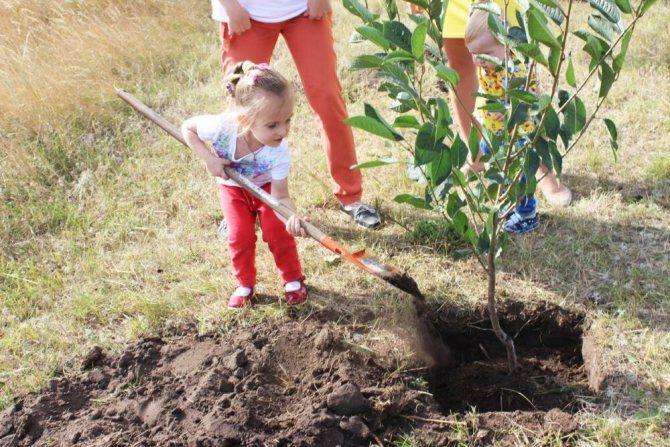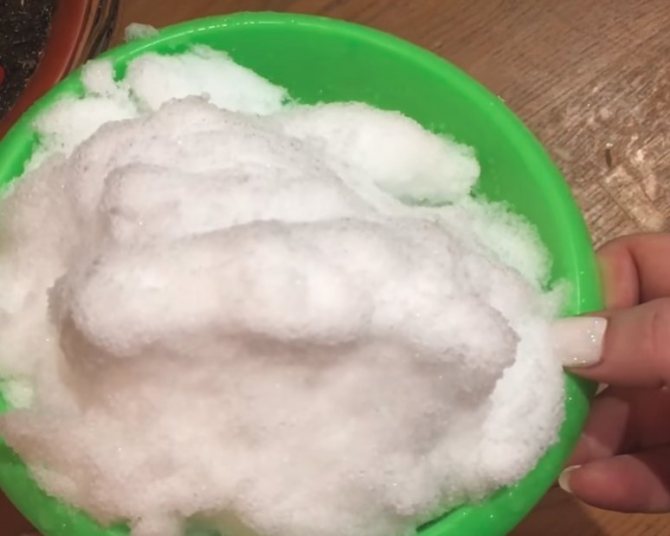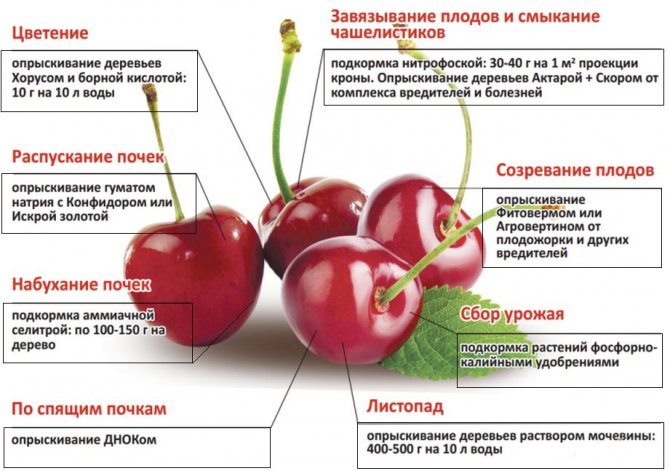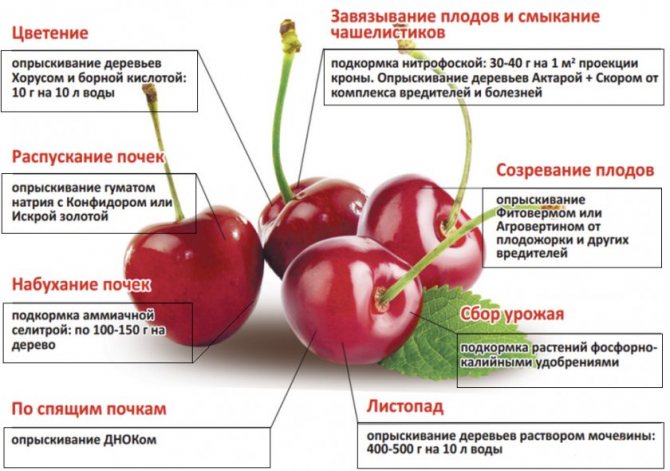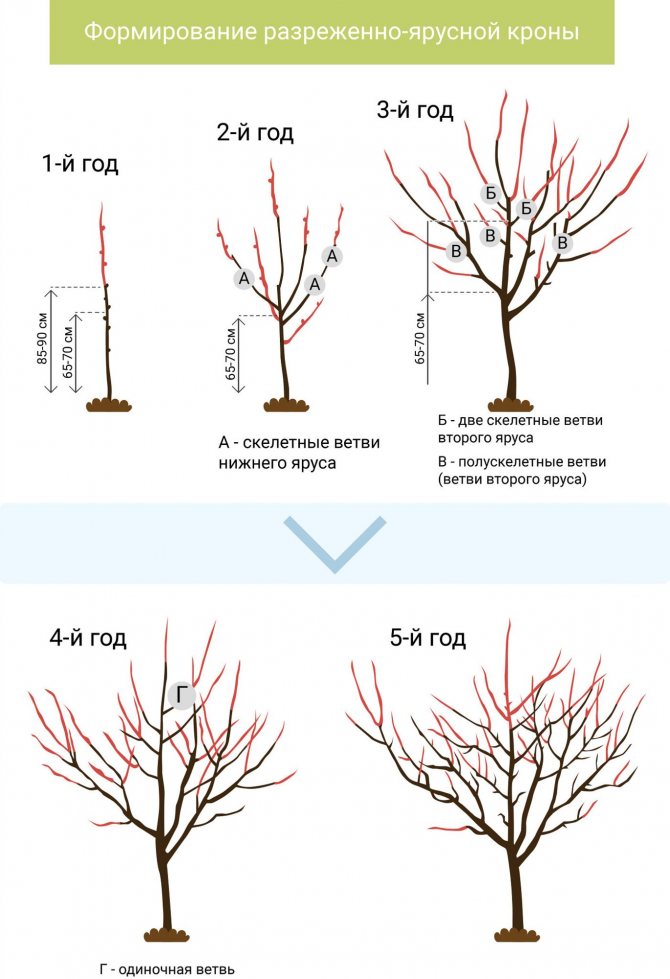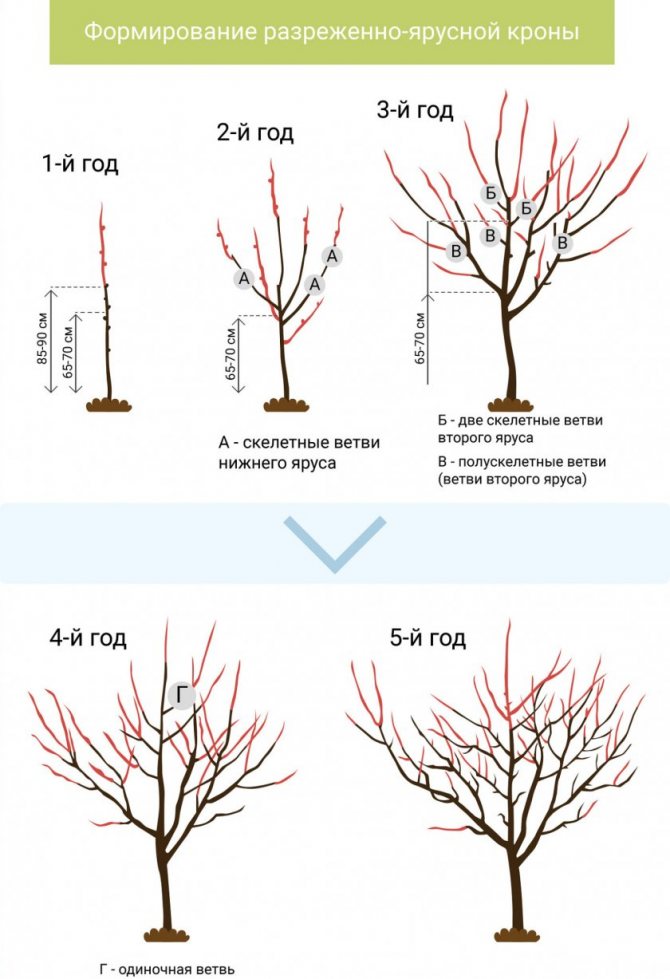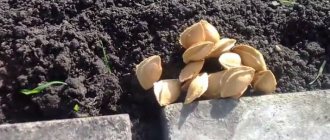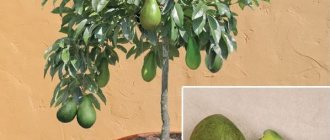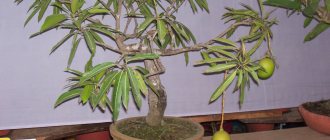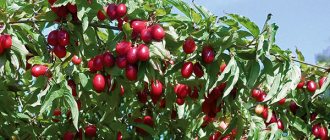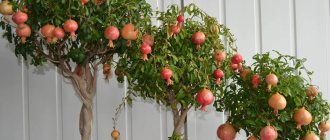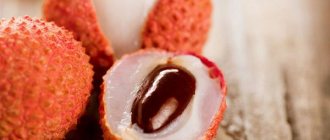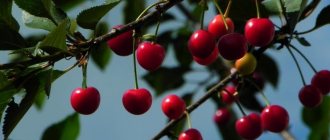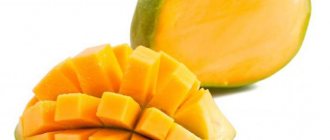Pitted cherries can be grown. But it is much easier and faster to enter any even abandoned cherry orchard and dig out root shoots, which, although inferior to the grafted cherry in terms of the beginning of fruiting, is much more durable than the cultivated "relative".
The reasons for growing cherries from the stone may be to obtain a rootstock for grafting and the desire to have a seedling of a favorite variety on the site. But in most cases, felt cherries are grown from cherry pits.
Since the lifespan of this plant is short - only about 10 years. Therefore, they are in a hurry to prepare a replacement for her at the site. The features of growing cherries from the stone will be discussed in this article.
Benefits of pitted cherries
Drupe cherries have many advantages. The most important thing is that the plant is fully adapted to climatic conditions; additional hardening or the use of warm shelters is not required. Cherry also favorably differ in endurance and resistance to diseases, there will be no problems with leaving. Seed propagation is also recommended if a tree needs to be grown to create a bonsai.
The disadvantage of growing seedlings is that varietal characteristics are extremely rare. The only way to get sweet, tasty fruit is by vaccination.
At what distance to plant cherries from each other?
Sweet cherries need cross-pollination. Therefore, it is recommended to plant 2-3 trees at once so that they pollinate each other.
Important: The distance between trees is very important. As long as the seedlings are small, this is not critical. But in the future, trees will grow, crowns of neighboring trees may interfere with each other. They shade a friend, do not give the branches a space. This affects the harvest.
Therefore, even at the moment of laying the garden, you should take care of the correct distance. It depends on the dimensions of an adult tree and is calculated using the formula: A1 + A2 (m). Where A1 and A2 are the maximum tree height.
If it is not possible to calculate the height of the trees or there is no place in the garden, the average distance between trees should not be less than 3-5 m.
The best varieties for germination
Not all varieties are suitable for planting seeds. It is recommended to use the seeds of these cherries:
- Pink;
- Barbados;
- Spunk;
- Surinamese;
- Felt cherry.
Even a correctly selected variety does not guarantee that the experiment will end in success - bad weather conditions can destroy a young tree.
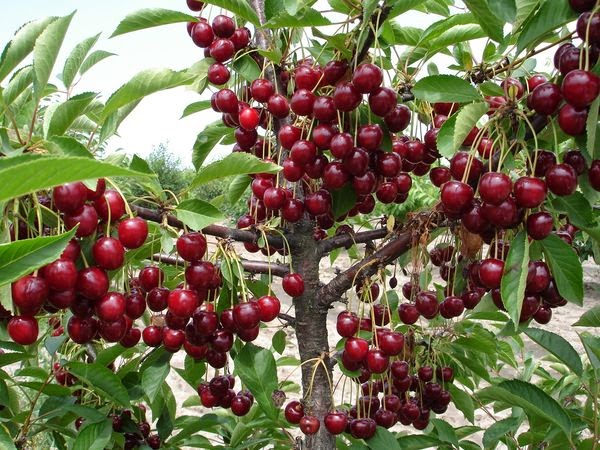
Why did not the cherry blossom, does not bear fruit: the reasons, what to do?
Sweet cherry blossoms when the average daily air temperature is 10-12º. The temperature should be above 15º during the day. These are the spring months of March-April.
Consider the reasons why the cherry did not bloom:
- No pollination... To do this, you need to plant not one tree on the site, but several. Cherries are not suitable for sweet cherry pollination.
- Incorrect cropping... The crown should be formed in the form of tiers or a bowl at an angle of branches of 50 *. Pruning must be done on time.
- Excess or lack of moisture... During heavy rains with stagnant water, the soil around the cherries should be mulched with a special film. Watering should not be too often once a month in the summer and in September 1 time before the onset of cold weather.
- Incorrect fit... The root collar should not be deeply planted in the ground, or vice versa - be located high. The optimum height is 5 cm above the ground.
- Pests and diseases... The tree may not bloom, as it is affected by the disease.
- Frosty winter... Cherry simply may not survive the winter if the frost resistance of the variety is low and the winter is cold.
- The time has not come... Some varieties may not bear fruit for up to 5 years.
- Wrong place... The sweet cherry may not bloom, since the planting site was chosen incorrectly.
- Feeding... If you do not apply any fertilizers, cherries may stop blooming.
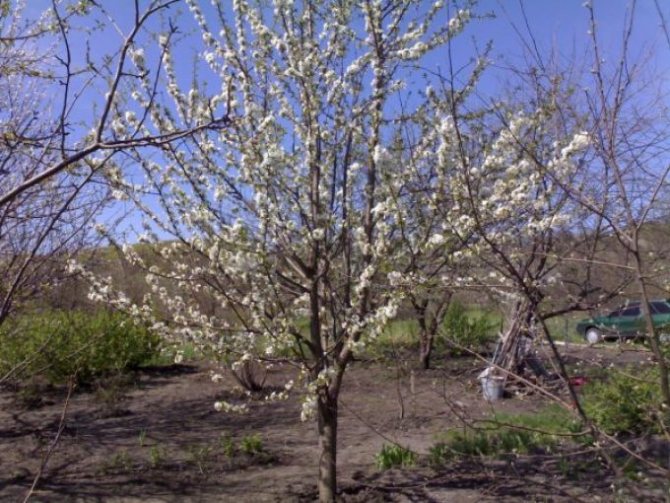

Cherry blossom
Seed preparation and stratification
Be sure to free the bones from the remnants of the pulp, rinse with warm running water. Pour drupe with water, stand for three days, regularly changing the liquid. After a short drying, send the seeds to a container filled with wet sand, it will help preserve the seeds, cause sprouts to appear.
The stratification process is mandatory; for this, send the container to the refrigerator. Can be kept for several months in a cool, well-ventilated area. If an autumn planting is carried out, hardening is not necessary, winter frosts will perfectly cope with stratification.
When does sweet cherry ripen?
Sweet cherries are among the berries that can be enjoyed before other berries and fruits. The ripening of the first berries depends on the growing climate of the trees and the variety.
In the south, cherries begin to ripen in mid-May. By July, cherries usually finish their fruiting.
Cherry varieties:
- Early: Ruby early, Valery Chkalov, Melitopol, Iput, Italian, Franz Joseph. These varieties ripen in mid-May - early June.
- Medium: French large-fruited, Gini, Amber, Drogana yellow, General's, Dniprovka. Ripening time - June-early July.
- Late: Melitopol dense, Leningrad yellow, Leningrad black, Raisin large-fruited. Ripening time - July.
Early varieties are suitable for immediate consumption; they are generally not canned. These varieties are soft and tender. Medium and late varieties are great for harvesting for the winter.
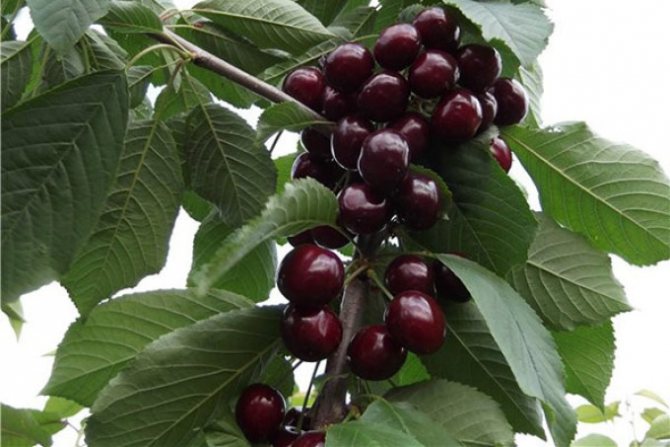

Cherry variety - Valery Chkalov
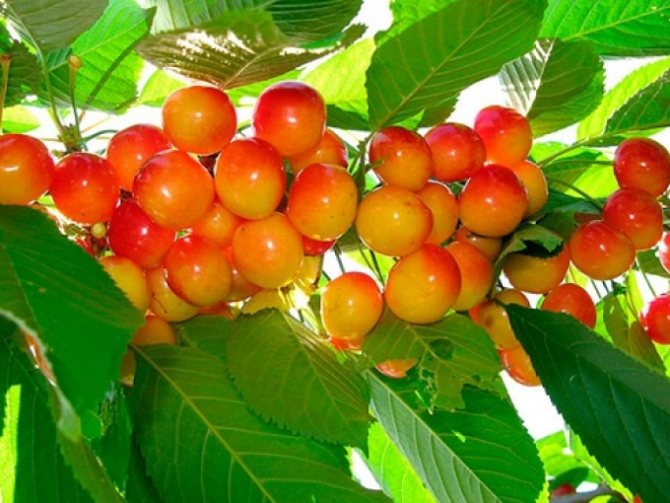

Cherry variety - Household


Cherry variety - Iput
In which land to plant a bone
The simplest version of the soil mixture is a ready-made substrate for seedlings, which is recommended to be purchased at the store. No less useful for plants will be the soil in which the mother plant grows in the country. Pre-subject it to a special treatment that will disinfect the soil. Spill the earth abundantly with a pink solution of potassium permanganate, or simply send it to the oven and ignite at a high temperature.
Another option for soil cultivation is to pour boiling water over it.
If using nutrient soil, no fertilization is required when planting. Otherwise, add a little organic matter, mineral fertilizers. Put a drainage layer in the pots (broken small bricks, pebbles).
See also
Description of the Assol cherry variety, fruiting characteristics and care rulesRead
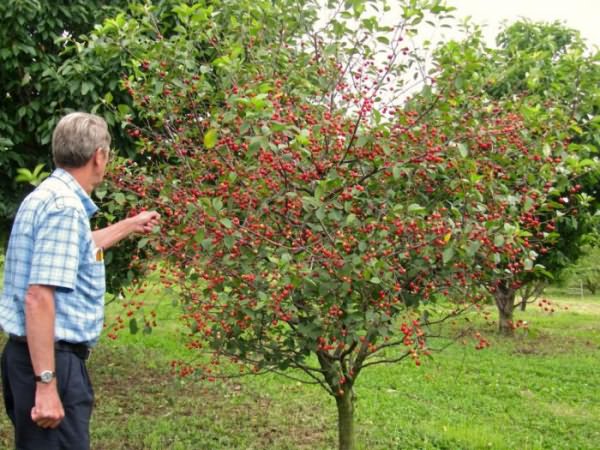

We collect seeds.
If you think that a good cherry can come from any seed, then this is absolutely not the case. It is best to choose a cherry variety that is already growing in your area. In order to choose high-quality planting material (seeds), you need to choose ripe berries that do not contain worms. You also don't need to think that if you buy cherries at the bazaar or in the store, then you can grow a full-fledged berry from it. The thing is that most often the berries that are grown for trade begin to be harvested a little earlier than their technical maturity, so there is no need to rely on proper planting material. In the desired cherry, the seeds are very easily removed from the berry itself.You can collect seeds even from those berries that have fallen from the tree. The seeds may need about 9-10 pieces. You need to understand that not all of them will be able to sprout, while others can bring small and weakened sprouts that will not have full, normal development.
Cherry planting and germination technology
For germination at home, small containers (up to 0.5 liters) are usually used. If a container is used, you will have to keep the distance between the bones from 15 cm.If the drupes had time to germinate in the sand, carefully lower them into holes up to 3 cm deep with a finger or a stick.
If seeds without sprouts are planted, do not increase or decrease the depth - 3 cm is quite enough to germinate the seeds. Be sure to irrigate the soil surface. The process is recommended to be carried out with a spray bottle or simply pour over the container wall.
To accelerate the emergence of shoots and maintain humidity, build a greenhouse. A plastic bag or piece of glass will work great for this. After planting, send the container to a light warm windowsill. The first shoots will appear in 3-5 weeks. Germinated drupes will sprout a little earlier - in 2-4 weeks.
Taking care of your seedlings is like growing houseplants. Watering regularly (use only warm liquid), loosen the soil surface. Use a thin stick to break up the crust that forms on the surface. Do not loosen deeply - there is a risk of damaging the tender young roots and ruining the plant.
Fertilizing with organic infusions, use a solution of mullein, humus. Fresh organic matter is strictly prohibited, such dressings can harm the roots, even cause a burn.
The defeat of cherries growing in pots, pests or diseases is extremely rare. In order to completely eliminate the risk of disease or occupation of the plant by insects, it is recommended to carefully examine the trees, if necessary, use proven folk remedies or chemicals.
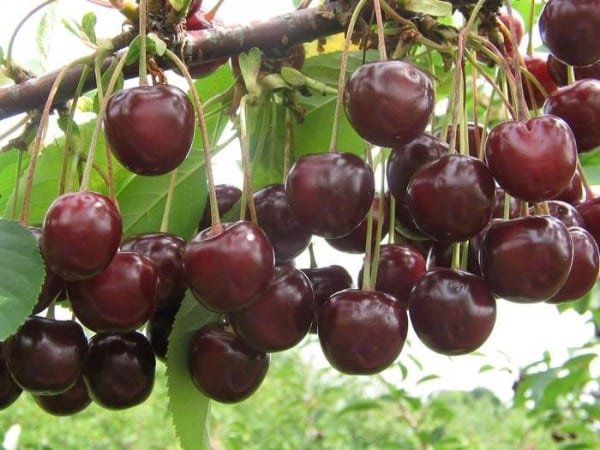

Preparatory stage
To get the expected result, the cherry pits must be carefully prepared for germination, it is equally important to plant it correctly.
How and when to collect cherry pits
A sprout breaking through to the outside will have to open the fruiting shell of the cherry seed, which is not easy. For further germination, select berries larger and more ripe. The first thing to do, as soon as they are collected, is to separate the pulp from the seeds.
We save the cherry pits before planting
How to preserve cherry pits before sowing? They must not be allowed to dry out or rot. To do this, you will have to take several steps:
- get rid of the remnants of juice and pulp, carefully rinsing in cold water;
- evenly lay on the fabric and leave in the shade to dry;
- for storage, it is better to use a paper bag, and then pack it in a plastic bag;
- before sowing, keep in a dry place, make sure that the temperature does not rise more than 20 ºС.
Natural stratification: spring and autumn
In order for the seedlings to nevertheless sprout, special training is organized for the bones, called stratification. Simply put - they are kept in the cold in a special way.
If cherry seeds are sown in the fall, they are soaked for a week first. For these purposes, cold water is used. A prerequisite is to change it daily. The bones are placed in the soil one and a half months before it freezes, while deepening by 3-5 centimeters and keeping the distance between 15 centimeters.
In the winter cold, the cherry is covered with a snowdrift. In spring, young cherries will need weeding, watering and loosening of the soil. Autumn stratification is natural.
- Spring.
Artificial stratification of cherry pits is carried out 3-4 months before the time of planting them in the ground.
The first method is similar in its effect on seeds with natural stratification. Cherry pits are soaked in the same way. A week later, the sterilized jar, with a capacity of 3 liters, is 2/3 filled with a mixture of the substrate and soaked cherry pits. When preparing the substrate, you can use:
- sawdust;
- coarse sand;
- dry grass - smaller, chopped;
- crushed peat;
- sphagnum moss;
- small expanded clay.
Care of planted sprouts
It is recommended to transplant cherries into the open ground at the age of 1-2 years. It is imperative to carry out the transplantation process before bud break or before frost. Prepare the pit in advance - add humus, potash fertilizers. Plant after careful inspection of the seedling, there should be no damage to the roots. Finish planting with a thick mulch layer of sawdust or peat. Install the support immediately, make a small depression, which will facilitate watering.
A prerequisite is regular, but scanty watering. Cherries, like most stone fruit crops, are afraid of excessive moisture, so it is better to irrigate the soil more often, but in small portions. Alternate watering with top dressing, but only if the tree grows on too poor soil. Nutrient soils perfectly supply the plant with the necessary components, so fertilization is not required in the first year after planting.
Loosen the soil in which the seedling grows regularly. Do not go too deep, careless movements can damage the roots. Remove weeds - grasses that grow abundantly near the tree will take away some of the nutrients, which will affect the condition of the plant.
See also
Description and characteristics of the cherry variety Meeting, breeding history and cultivation featuresRead
In order for the tree to grow magnificently and develop, it is imperative to carry out regular pruning. Do not cut the branches for the first year - remove part of the main trunk. The recommended cutting height is about 65 cm from the soil surface. The procedure is carried out with a clean sharp instrument. It is not necessary to cover with garden varnish - pruning will not bring much harm to the cherry.
In spring and autumn, prune side shoots. Shorten them by a third. Remove dead, diseased or dry branches at the same time.
Another important rule of caring for planted cherries is regular inspection of the plant, which will allow you to timely notice the development of the disease or the occupation of insects. Use chemicals or folk formulations to fight diseases, pests. The main thing is to carry out the procedure in a timely manner, preventing the spread of the disease or the reproduction of the insect colony.
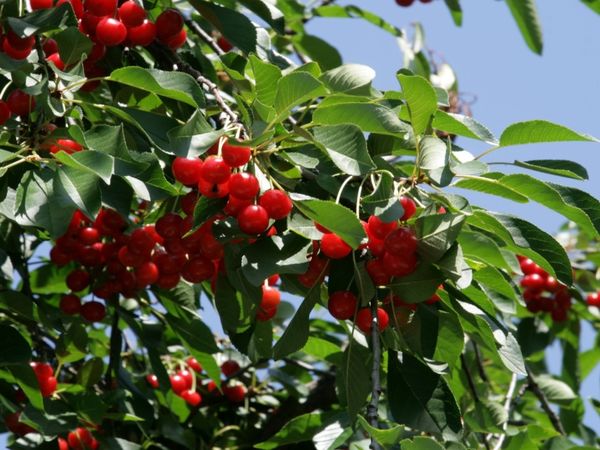

How to make a transplant.
A week before transplanting, the plant does not need to be watered for 7 days. When you transplant, you need to create a mound in the hole, which looks like a cone, on which a container with a plant is placed (if you planted in a peat container) and then level it so that it does not turn out that the plant is at a great depth in the soil. if you were growing seedlings in a plastic container, then transplanting must be done using the transshipment method, keeping the earthen lump. After the hole is filled with soil, the trunk circle must be well compacted and 20 liters of water must be added. After absorbing water, mulch the soil with peat and sawdust, in a layer of 5 cm.
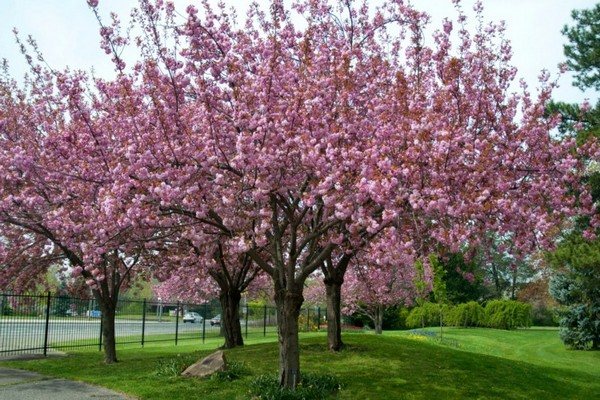

What to do if the cherries are frozen over?
Both an old tree and a young one can freeze slightly. Young trees are most often affected after the first wintering. If the first frosts hit in the first half of winter, the tree will probably survive this phenomenon normally. The first bitter frost that appears in the middle of winter is much worse.By this time, the tree loses its frost resistance.
Important: You can determine the freezing of a tree by darkened shoots, buds, bark, roots.
When the snow melts, you can check if the roots are frozen. To do this, carefully dig up a small area and make a cut on the wood. If the color has darkened, then the roots are frozen. In the same way, you can check the freezing of the shoots.
If the buds are frozen and darkened, there will be no harvest. They will crumble. This often happens in the spring, when frost starts unexpectedly.
A frozen tree cannot always be saved. There are times when a tree is so damaged that it only remains to uproot it and plant a new one. In most cases, the tree can be healed.
How to reanimate a frozen tree:
- Cut off diseased damaged parts.
- Frost holes need to be cleaned before the spring sap flow, treated with copper sulfate and garden pitch.
- Trunk circles must be mulched with humus.
- A frozen tree needs special care. This is frequent watering, weeding and loosening of the soil.
- If the frozen cherry blossoms, 1⁄4 of the flowers are left, the rest of the ovaries are removed. This is done so that the cherry regains its strength, and does not waste it on the fruiting process.
Disembarkation
After a successfully grown seedling, you can start planting in the ground.
Remember that an adult cherry has a hard time transplanting, so decide on the final landing site right away. Do not forget also about the planting dates: in spring - in April, before bud break, in autumn - in October.
For the result to be successful, properly prepare the place for the future cherry. Dig a hole with a diameter of about 60 cm and a depth of 45 cm - so that the root system of the plant fits without damage. By the way, before planting, the root system should be carefully examined and the dried roots should be cut off. It also doesn't hurt to keep the roots in water for a couple of hours before planting.
The soil needs to be fed with humus, phosphate or potassium fertilizer. After planting the seedling in the ground, the soil must be mulched with compost or bird droppings.
Place the seedling in the hole and compact the soil with your hands. Place a peg next to it. Don't forget to make a watering hole. The seedling should be watered abundantly with warm water.
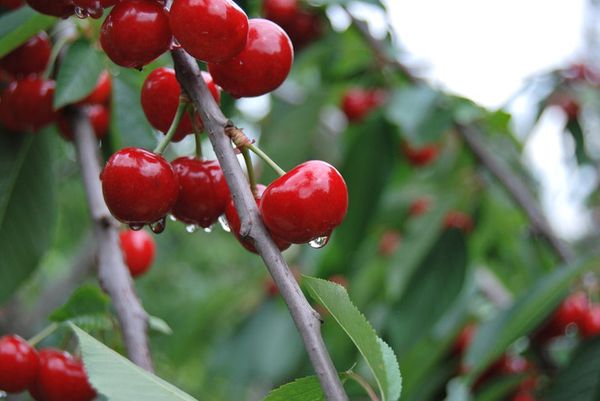

Why cherries dry up: reasons
Cherry dries up for the following reasons:
- Diseases
- Improper care
- Close occurrence of groundwater.
- Pests
There are two diseases that most often cause leaves and branches to wilt:
- Moniliosis
- Verticillosis
Examine the tree carefully. With moniliosis, the branches dry up, as if struck by fire. With verticillium, brown spots can be seen on the tree, from which gum oozes. When a disease is detected, it is necessary to start a fight:
- Remove diseased areas, strip the gum.
- Process the cuts with garden pitch.
- Treat the tree with a special antifungal agent that fights the disease.
- Burn the cut branches so that spores do not fall back on your trees.
- Continue caring for the tree throughout the year, observing the above rules.
- In the fall, dig up the soil in the trunk circle, apply fertilizers.
Now you know how to plant and care for cherries to get a rich harvest.
Botanical descriptionEdit
Botanical illustration from the book by K. A. M. LindmanBilder ur Nordens Flora
, 1917—1926
Sweet cherry is a woody plant belonging to the trees of the first size. It is characterized by rapid growth, especially at a young age. The crown is ovoid, however, depending on the growth conditions, its shape can change from ovoid to conical. A characteristic feature of sweet cherry is the presence of two types of shoots: brachyblasts and auxiblasts. The bark at a young age is brown, reddish or silvery in color, with numerous stripes, for a long time covered with brown lenticels, and sometimes it can peel off with transverse thin films.
The root system is predominantly horizontal, but under favorable conditions, well-branched vertical roots can also form. The taproot is formed only during the first - second years of life, and over time it branches out.
Three types of buds are characteristic of sweet cherries: generative, vegetative and mixed types, which are respectively located on fruit and growth shoots.
Leaves are short-pointed, obovate, elongated-ovate or elliptical, serrate, slightly wrinkled. Petioles with two glands at the base of the plate, up to 16 cm long.
The flowers are bisexual, white, as a rule, appear on the shoots shortly before the leaves bloom, forming a few-flowered, almost sessile umbrellas. There are five sepals and petals, many stamens, one pistil.
The fruits are real drupes, with a fleshy, juicy pericarp, oval, spherical or heart-shaped in shape, and from light yellow (almost white) to dark red (almost black) in color, wild fruits are smaller than cultural ones, up to 2 cm in diameter. The stone is spherical or slightly elongated, with a smooth surface. The seeds are composed of the rind, embryo and endosperm. The color of the peel is yellowish-brown, sometimes with a dark red tint.
Cherry is characterized by several methods of reproduction (seed, stump and root suckers), but under natural conditions seed reproduction predominates.
It differs from cherry in a tall, straight stem, with a rather light bark, whorled branches, color (light green), shape (oval, long, strongly serrated) of its hanging leaves, as well as a rather limited area of distribution, depending on the large requirements for heat. Sweet cherry is a plant of the temperate climate of southern Europe.
Process features
Cherry is less frost-resistant than its related cherry and can grow wild only in the southern regions. For cultivation in harsher climates, breeders create hybrid varieties that require pollinators.
It is possible to get a new cherry from a stone, only it will not be possible to accurately determine the varietal variety of the grown berries. There is no guarantee that a small and non-viable wild will not grow from the nucleolus of a large, healthy berry.
Grown cherries, even very different from the mother plant, will be able to bear fruit: gardeners with experience recommend using it as a rootstock for cultivated and hybrid varieties. Some of its advantages include the following:
- high resistance to frost;
- adaptability and unpretentiousness;
- immunity to common diseases and pest attacks.
It is advisable to use grown cherry trees for landscaping in places with a high level of atmospheric pollution, where ordinary garden plants simply will not take root. We are talking about highways, city parks, etc. It is advisable to plant more than one variety of cherries and cherries on a berry from your own seedlings. This increases the chances of getting a rich harvest.
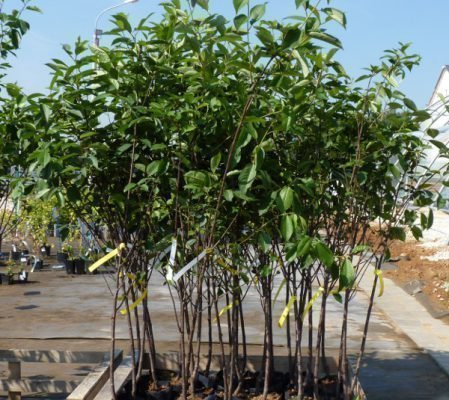

Cherry seedlings withstand heavy air pollution

